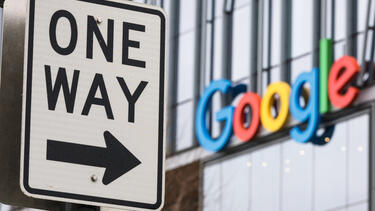Competitive Strategy
The Balloons Signal a New Age of Mass Surveillance
Prof. Paul Bracken, an expert in global competition and strategy, says these encounters reveal an urgent need for citizens and governments to catch up on how much we’re already being spied on.

The Antitrust Case against Google
State and federal authorities are reportedly preparing to bring antitrust charges against Google. We talked to Yale SOM’s Fiona Scott Morton about the company's dominant role in online advertising and how it limits competition.

Contrary to Conventional Wisdom, Margins Don’t Rise as a Company Grows
Nearly every business plan contains the assumption that as the company grows, its average costs will fall and profit margins will rise. But that isn’t borne out by the numbers.

How Should Companies Fuel Word of Mouth?
New research finds that offering a free tier or giving existing customers bonuses for making referrals—or a combination—can be effective, depending on the size of the audience and whether the project has a social aspect.

When Corporate Acquisitions Affect Healthcare
Companies often purchase competitors, not to acquire their ideas and products, but to shut them down. A recent report raised questions about whether such an acquisition may be partially responsible for a shortage of ventilators in the United States.

Economic Competition in a Time of Crisis
What will the sudden economic shock mean for competition and antitrust policy? We asked Yale SOM’s Fiona Scott Morton, an economist who served in the Antitrust Division of the U.S. Department of Justice, for her perspective.

Why the WHO Was Afraid of Crying ‘Pandemic’
Yale SOM’s Saed Alizamir, with Francis de Véricourt of ESMT and Shouqiang Wang of the University of Texas at Dallas, recently published a study that uses game theory to play out the tradeoffs that the WHO and other public agencies face as they try to give timely warnings while maintaining their credibility.

The Suleimani Killing and the New Order of Armed Conflict
We asked Paul Bracken, a professor of management and political science, what the capability to pinpoint enemy leaders from afar in real time means for modern warcraft.

Firms Sacrifice Worker Safety When Demand Is High
Using data from the U.S. mining industry, Yale SOM’s Kerwin Charles and his co-authors investigated the relationship between higher demand and safety, and found that increased investment in safety measures is overwhelmed by the incentive to increase production while prices are high, leaving workers less safe overall.

What’s the Right Price?
A new study co-authored by Yale SOM’s Kevin Williams suggests that the zone pricing employed by home improvement chains benefits some consumers at the expense of others—and costs one of the two giants potential profits.

Can Antitrust Enforcement Protect Digital Consumers?
More and more of our economic and social lives are being conducted through digital channels. Economist Fiona Scott Morton talks about how effective antitrust regulation and enforcement can ensure that consumers benefit from the next killer app.
